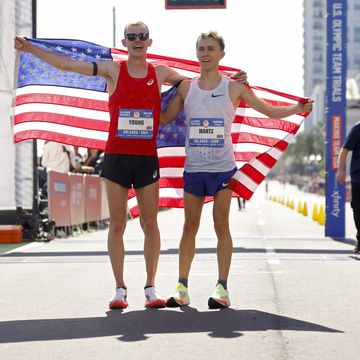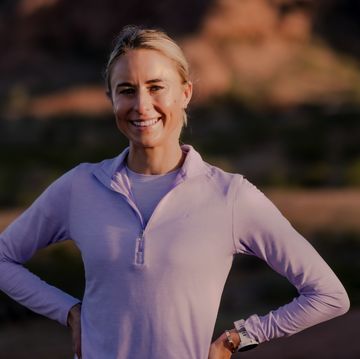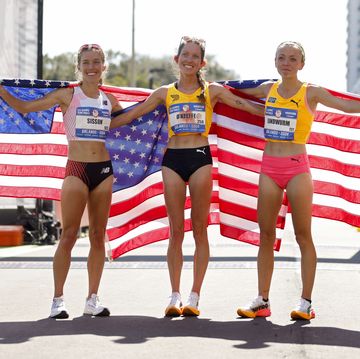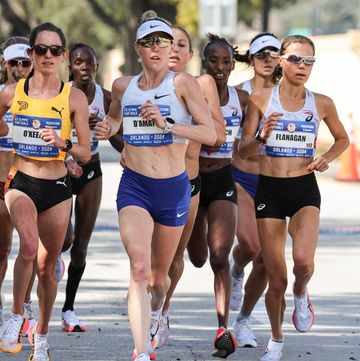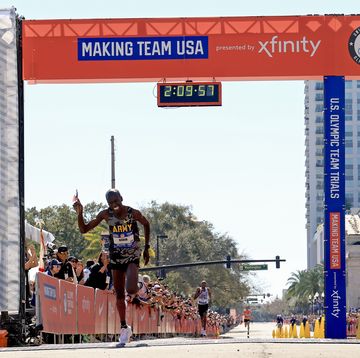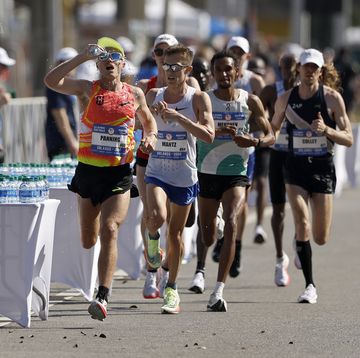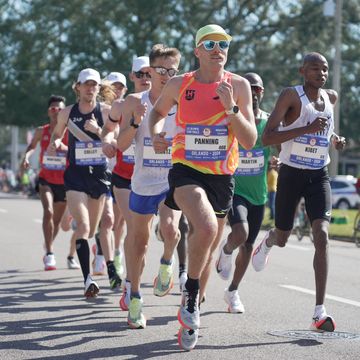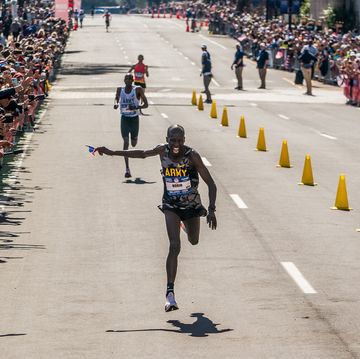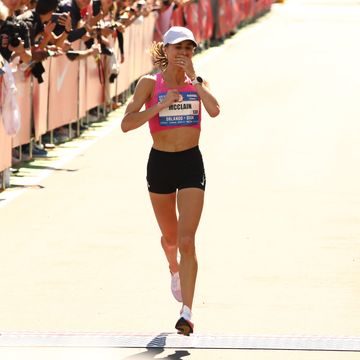Qualifying standards for the 2024 Olympic Marathon Trials were announced today at the USA Track & Field (USATF) annual meeting, and they’re faster than the times needed to get into the 2020 race—especially for women.
Women who want to enter the race must have qualified with a 2:37 marathon or faster, or a 1:12 half marathon or faster. The marathon time is 8 minutes faster than the 2:45 required to get into the 2020 Trials. (The half marathon time in 2020 was 1:13.)
For men, the times are 2:18 and 1:03, one minute faster at both distances than the 2020 times (2:19 and 1:04).
The qualifying window for marathon times opens on January 1, 2022 and for half marathon times, January 1, 2023. The window closes 60 days before the Trials race, but where and when that race (or races) will be held has not yet been announced.
Leading up to 2020, runners had 28 months during which to try to achieve a qualifying standard. The time period to qualify for the 2024 Trials will be shorter.
The 2020 Trials, held in Atlanta, had a historically large field, with 511 women and 260 men qualified to run. Improved shoe technology made it easier for many sub-elite runners to hit the times they needed to qualify for the race.
The top three made the Olympic team—for the women, it was Aliphine Tuliamuk, Molly Seidel, and Sally Kipyego. On the men’s side Galen Rupp won, Jake Riley was second, and Abdi Abdirahman was third.
Behind them, the race turned into a celebration of the strength of distance running in the U.S., with hundreds of runners who had no realistic shot of making the Olympic team soaking up the crowd support along the course and celebrating their achievements.
Leaders at USATF apparently decided the field was too big. Based on the women’s qualifying list from 2020, only 83 women had a marathon time faster than 2:37. Only eight women qualified with a half marathon faster than 1:12.
Conceivably, with the stricter standards, the women’s field could go from 511 in 2020 to 91 runners in 2024, although certainly many runners will improve to meet the new, tougher times.
By the same measure, the men’s field from 2020 would have been 76 people smaller in the marathon, 15 smaller in the half marathon. The men’s field would shrink from 260 to 169, using the 2020 qualifying list.
Fans of running debate the ideal size of the Trials field. On one hand, the race’s sole purpose is to select the Olympic team, and extra entrants detract from that purpose. In 2020, Kaitlin Goodman, who could have finished in the top 10, fell and was trampled in the crowd and ended up dropping out of the race.
On the other side, the Trials are a powerful opportunity to connect elite running with a broad audience. People all over the country get behind Trials qualifiers from their communities and follow the race with interest.
Much of this discussion may be moot. World Athletics, which governs track and field and the marathon at the Olympics, has encouraged national governing bodies to rely on world rankings to choose their national teams, rather than a one-day Trials format from which the top three make the team.
The Olympic standards are also expected to be stricter, too. In 2021, for the marathons in Sapporo, Japan, the Olympic standards were 2:11:30 for the men and 2:29:30 for the women—in other words, it wasn’t enough for Americans to have finished in the top 3 at the Trials in the marathon. They also had to have run a marathon faster than the Olympic standard to get to go to the race. (World Athletics ultimately granted the Trials “gold label” status, so the top three runners would make it to the Games, regardless of times.)
World Athletics has not yet announced what the 2024 Olympic standards will be.
USATF has not yet sent out a request for proposal (RFP) for cities to host the Trials, which puts the process well behind its typical cycle. Atlanta was announced as the host of the 2020 Trials by April 2018, meaning bids were in to USATF months before that.
Although the Trials in Atlanta were seen as a huge success, the local organizing committees usually lose money on the race because of restrictions on which companies can sponsor the event.
The Atlanta Track Club (ATC), for instance, invested $1 million in the Trials to bolster the Publix Atlanta Marathon and Atlanta as a running destination. “The thought was that over the years, we would see that investment turn into more people coming to Atlanta to take part in Atlanta Track Club events,” said Jay Holder, vice president of marketing and communications at the ATC. “So this was never meant to be a money maker for us.”
Races are not thought to be clamoring to bid on the 2024 Trials, especially after a year in which most major marathons were canceled due to the pandemic and finances are stretched in the road racing industry.
—This story will be updated.

Sarah Lorge Butler is a writer and editor living in Eugene, Oregon, and her stories about the sport, its trends, and fascinating individuals have appeared in Runner’s World since 2005. She is the author of two popular fitness books, Run Your Butt Off! and Walk Your Butt Off!


